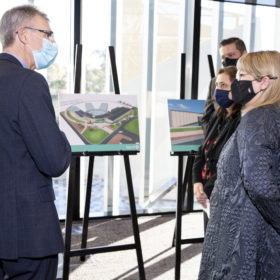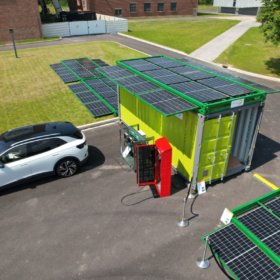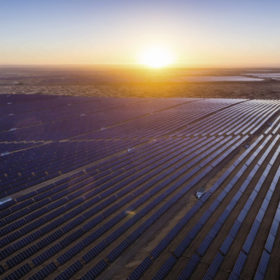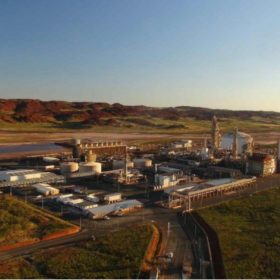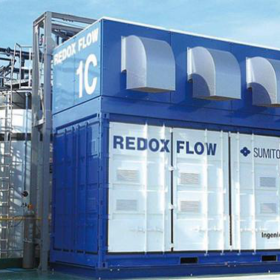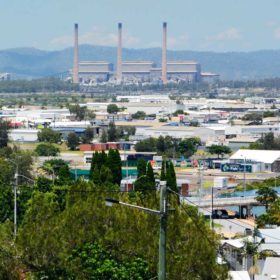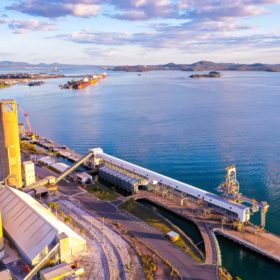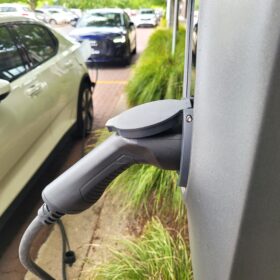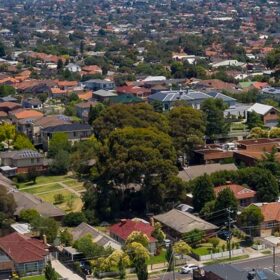Advanced battery and hydrogen research facilities to be built by Victoria’s Deakin University, backed by government funds
Deakin University has received funding for two multi-million dollar facilities, one devoted to advanced battery research and the second for the development of hydrogen technology. The projects’ aims will be to overcome hydrogen’s hurdles and, for batteries, to improve existing technologies while also investigating sustainable alternatives like sodium batteries.
Using the oceans’ depths to store renewables, compress hydrogen
Underwater gravity energy storage has been proposed as an ideal solution for weekly energy storage, by an international group of scientists. The novel technology is considered an alternative to pumped-hydro storage for coasts and islands without mountains that are located close to deep waters, and may also be interesting for PV if used to store green hydrogen.
Solar+storage kits for construction sites, one-off events
France’s Revolt Energy Green has developed a flexible solar+storage solution for one-off events, construction sites, and different kinds of off-grid applications. It has also developed a mobile hydrogen solution.
‘Rapid’ rejection of $50 billion renewable energy hub raises concerns
Developers of one of the world’s largest renewable energy projects have vowed to push ahead with plans to build the $50 billion Asian Renewable Energy Hub in Western Australia after the federal government’s decision to reject the project was labelled “perplexing” and “premature”.
Fortescue signs contract with TasPorts progressing 250 MW green hydrogen plant in Bell Bay
Tasmania’s port authority has entered into an agreement with Fortescue Future Industries for land and operating access for its proposed 250 MW green hydrogen plant at Bell Bay, in Tasmania’s north.
Commonwealth opens crucial discussion on hydrogen certification
The Australian Department of Industry, Science, Energy and Resources is inviting discussion on its newly proposed Guarantee of Origin certification scheme for hydrogen production. The discussion itself however, which is welcomed by hydrogen industry stakeholders, has a long way to go before its methodology works to accurately differentiate hydrogen produced by renewables from other sources.
Malaysian green hydrogen project opts for Perth-based flow batteries
Perth-based TNG Limited has signed an agreement with Malaysian green hydrogen company AGV Energy which will see its vanadium redox flow batteries integrated into the HySustain project to store solar energy for green hydrogen production.
Clean? Green? Blue? Blended? Queensland’s GEAP project defies hydrogen categories
The Gladstone Energy and Ammonia Project plans to efficiently use available resources and technology to produce low-cost, relatively low-emissions blue hydrogen from coal, and provide a conduit to commercialising true green hydrogen. A federal emissions policy driving toward a net-zero commitment could properly value GEAP’s place in Australia’s energy and export ecosystem.
Nationally sanctioned 23 GW hydrogen/ammonia project gets tangled in the wetlands
Is there something fishy about Environment Minister Sussan Ley rejecting the Asian Renewable Energy Hub’s development application? The murkiness of the federal government’s drive to make Australia an exporter of hydrogen, of any hue, gives rise to concerns.
WoodMac forecasts Australia’s low-carbon hydrogen export revenue to reach US$90 billion by 2050
Wood MacKenzie’s energy transition modelling is predicting a primacy in the future low-carbon hydrogen economy for Australia. Thanks to the country’s solar irradiance and renewable energy expertise, as well as its relative proximity to major off-taker markets, Australia could be looking at export revenues of up to US$90 billion by 2050.
